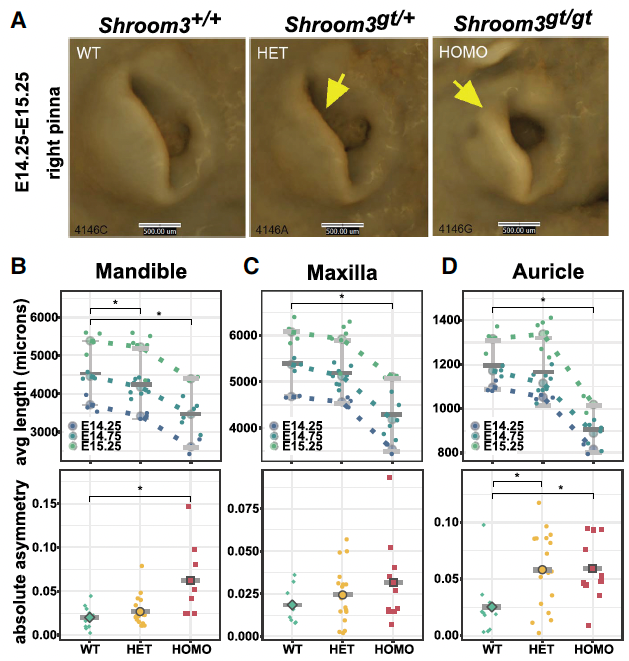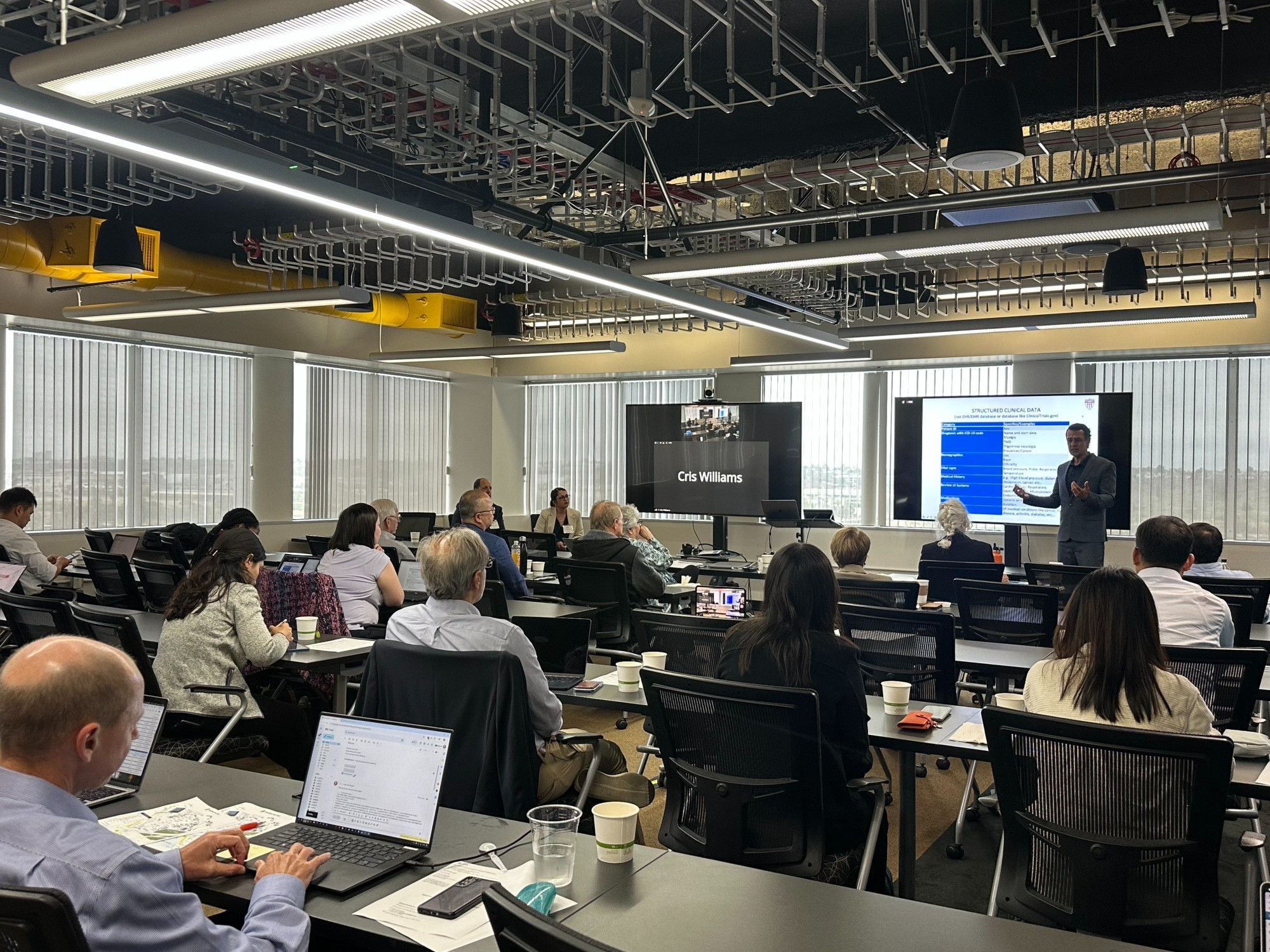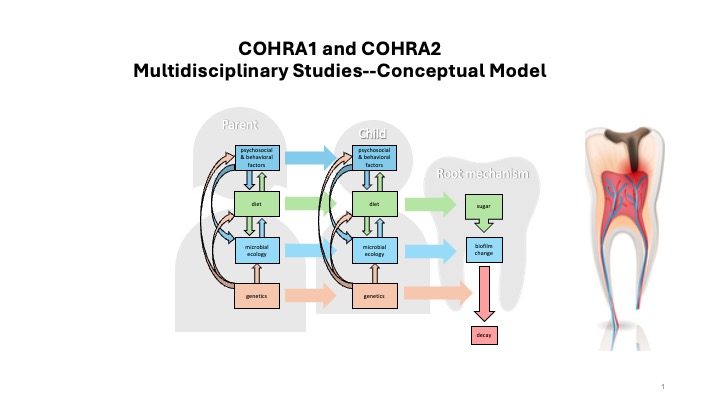News & Events
Materials Now Available: November 2025 FaceBase Bootcamp (10 November 2025)
Thank you to everyone who joined our November 2025 FaceBase Bootcamp for Users and Data Contributors!
Recordings, slides, and other materials from the session are now available on the event page.
The bootcamp covered:
- How to find, filter, and download data from FaceBase
- Requesting controlled-access human datasets
- Preparing and contributing data using FaceBase tools
- Guidance for NIH Data Management and Sharing (DMS) plans
- And more!
Watch individual segments or the full playlist on our YouTube channel, and download the presentation slides directly from the event page.
We’d love your feedback!
If you took the training (either live or later via video) please take our short, anonymous 3-minute survey to help shape future FaceBase trainings.
Data release: Identification of lymphatic vessels in skull periosteum but not bone marrow reveals skull channel heterogeneity (18 September 2025)
This dataset has been released to FaceBase by Dr. Jian-Fu Chen’s group of the University of Southern California. A related manuscript is in preparation; in the meantime, these data are available for the community.
FaceBase Dataset:
Identification of lymphatic vessels in skull periosteum but not bone marrow reveals skull channel heterogeneity
Principal Investigator: Jianfu Chen (University of Southern California)
DOI: https://doi.org/10.25550/8R-NM0R
Description:
We identified lymphatic vessels at the skull periosteum and found no evidence of lymphatic vessels in the cortical bones or skull bone marrow, where the lymphatic marker VEGFR3 labels blood vessels. Skull periosteum channels to the upper skin are found to occur more frequently in parietal bone than interparietal bone, whereas bone marrow is found more often in interparietal bone than parietal bone. Despite skull bone marrow expansion during aging, skull channels are significantly reduced, suggesting of aging-dependent uncoupling between skull channels and bone marrow. Together, our findings show lymphatic vessels are present in the skull periosteum but absent in bone marrow, with channel and bone marrow heterogeneity varying by skull region and age.
Data release: OPT imaging of the craniofacial morphology of control and Shroom3 null embryos (15 September 2025)
Through integrating Kids First whole genome sequencing with eQTL analyses and supporting 3D imaging data from Shroom3 mouse models, Timothy Cox’s lab has identified SHROOM3 as a bona fide craniofacial microsomia gene. The mouse embryo imaging data from this study is now openly available through FaceBase.

FaceBase Dataset:
Optical Projection Tomography imaging of the craniofacial morphology of control and Shroom3 null embryos
Principal Investigator: Timothy Cox (University of Missouri-Kansas City)
DOI: https://doi.org/10.25550/7E-Y876
Related Publication:
Zhu H, et al. Common cis-regulatory variation modifies the penetrance of pathogenic SHROOM3 variants in craniofacial microsomia. Genome Res. 2025 May 2;35(5):1065-1079. doi: 10.1101/gr.280047.124. PMID: 40234029; PMCID: PMC12047249.
Description:
This study followed up on a prior GWAS conducted a large cohort of Chinese patients with craniofacial microsomia (CFM) in which multiple associated genomic loci were identified. Using whole genome sequencing data from 2009 patients with CFM, including data from the Gabriella Miller Kids First program, and 2625 population controls, we analyzed candidate CFM genes within these GWAS peaks and found a significant enrichment of rare variants in one candidate gene, SHROOM3. Subsequent analysis of public expression QTL (eQTL) data revealed numerous eQTLs within the SHROOM3 GWAS peak, prompting us to consider whether eQTLs in combination with the rare variants might determine the presentation of CFM. Allelic phasing identified specific haplotypes in CFM patients, but not in controls, that contained multiple eQTLs in cis with the rare SHROOM3 coding variants. Subsequent luciferase assays confirmed the functional impact of many of these eQTL SNPs. Our findings support the notion that the penetrance of rare variants, that might otherwise be ignored in bioinformatic pipelines because they are seen in unaffected individuals, is influenced by combinations of in cis eQTLs - that is, the expression level of the mutant heterozygous allele may determine the penetrance. Under this premise, we conducted 3D imaging of embryos from two separate Shroom3 mutant lines of mice and performed a morphometric analysis of facial and auricular tissues of wild-type as well as Shroom3 heterozygous and homozygous embryos. These analyses in both models showed Shroom3 gene dosage-dependent effects on both external ear size and maxillary and mandibular growth and, importantly facial asymmetry, providing validation of SHROOM3 as a bona fide CFM gene.
All new sequencing data has been submitted to the National Genomics Data Center (https://ngdc.cncb.ac.cn/gsa-human) under accession numbers HRA005132, HRA004333, HRA003925, and HRA003924. Raw, reconstructed, and rendered optical projection tomography (OPT) data for all mouse embryos of the Shroom3gt strain used for the morphometric analyses is available now on FaceBase (https://doi.org/10.25550/7E-Y876). MicroCT datasets of the Shroom3 null allele strain are available through the IMPC website with IDs 157760 (wildtype) and 612303 (homozygous) (https://www.mousephenotype.org/embryoviewer/?mgi=MGI%3A1351655).
Meeting Summary Report from the 2025 FaceBase Forum (26 August 2025)
We have now posted the Meeting Summary report that provides a detailed overview of the program and identified action items from the 2025 FaceBase Community Forum. Thanks go out again to all participants and attendees who helped make this one of our best Community Forums to date!
You can find more meeting materials on our event page: 2025 FaceBase Annual Community Forum.
And stay tuned for initial details about next year’s Forum!

Data releases: Oro Facial Cleft and Oral Health Disparities (28 July 2025)
We are excited to announce new data releases on deep phenotyping of orofacial cleft and discovering oral health disparities in Appalachia:
Oral-Facial Cleft


Oral-Facial Cleft Families: Phenotype and Genetics (OFC1)
Principal Investigators: Mary L. Marazita and Seth Weinberg (University of Pittsburgh)
DOI: https://doi.org/10.25550/5A-FJBJ
Pittsburgh Oral Facial Cleft Studies: Extending the Phenotype of Nonsyndromic Orofacial Clefting (OFC2)
Principal Investigators: Mary L. Marazita and Seth Weinberg (University of Pittsburgh)
DOI: https://doi.org/10.25550/56-ES6P
Description:
Two comprehensive datasets from the University of Pittsburgh project Genetics, Genomics and Deep Phenotyping of Orofacial Clefts are now available on FaceBase. The OFC1 dataset comprises data from 29,369 individuals across 29 global sites, while OFC2 includes 24,754 participants from 6 international locations. Led by Drs. Mary Marazita and Seth Weinberg, these studies aim to identify genetic loci and other etiologic factors associated with nonsyndromic orofacial clefts (OFC), including cleft lip (CL), cleft palate (CP), and CL with or without CP (CL/P). Through deep phenotyping—including 3D facial imaging, dental assessments, intraoral photography, and psychosocial and medical histories—these datasets provide richly detailed profiles of individuals with OFC, their relatives, and unaffected controls. The integration of phenotypic data with genomic analyses (SNP genotyping and whole genome sequencing) enables refined gene-mapping and exploration of broader trait associations.
Oral Health Disparities

COHRA2: Factors Contributing to Oral Health Disparities in Appalachia
Principal Investigators: Mary L. Marazita (University of Pittsburgh), Betsy Foxman (University of Michigan), John R. Shaffer (University of Pittsburgh), Daniel W. McNeil (West Virginia University)
DOI: https://doi.org/10.25550/4Y-4SK4
Related dataset: Center for Oral Health Research in Appalachia, Cohort 1 (COHRA1): a study of northern Appalachian households (Released in 2023)
Principal Investigators: Mary L. Marazita (University of Pittsburgh), Daniel W. McNeil (West Virginia University), John R. Shaffer (University of Pittsburgh), Betsy Foxman (University of Michigan)
DOI: https://doi.org/10.25550/2Q-M86G
Description:
The overarching goal of the Center for Oral Health Research in Appalachia (COHRA2) study is to delineate the covariation between genetic, behavioral, family, and community factors associated with oro-dental disease and tooth loss in rural and urban northern Appalachian families (West Virginia and Pennsylvania). The COHRA2 study investigated factors that contribute to the disparately increased rates of dental caries in children living in Northern Appalachia from birth through age ten years. Specifically, the study focused on the microbiological community that develops in babies before they have teeth, as well as genetic and behavioral/environmental factors of both mothers and babies that predispose children to caries after their teeth erupt. The COHRA2 study was a longitudinal, family-based cohort study with one group with data for 2972 Subjects from 829 households. You can also find the COHRA1 related data set here.
NOTE: All of the above datasets are restricted-access human data. To gain access to this data, you must first go through the process outlined here.
